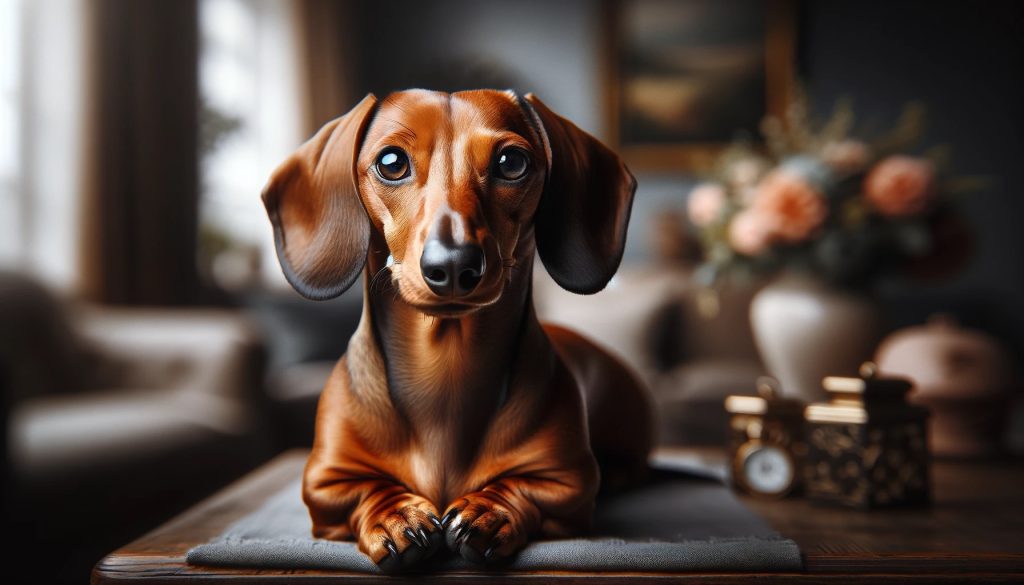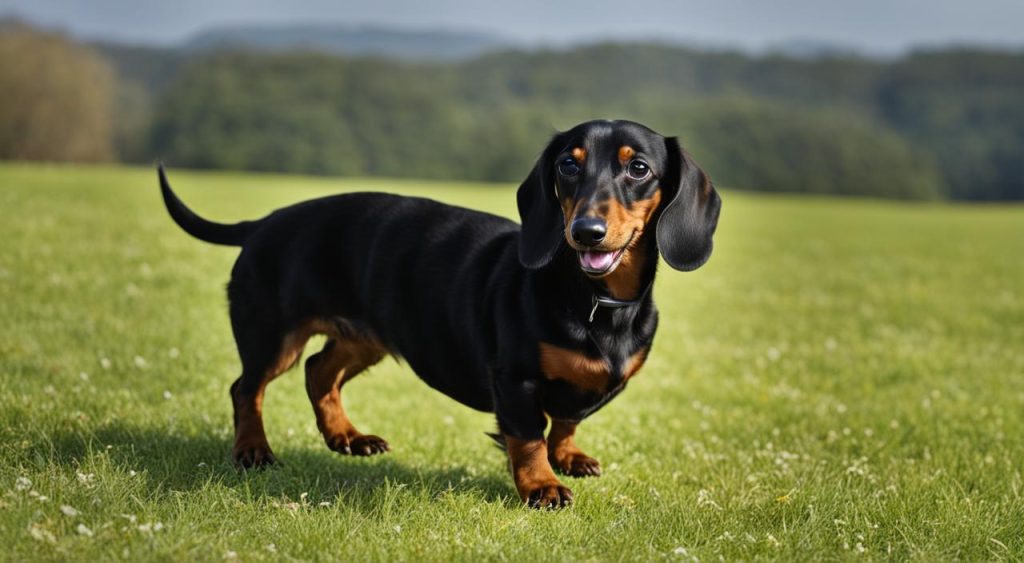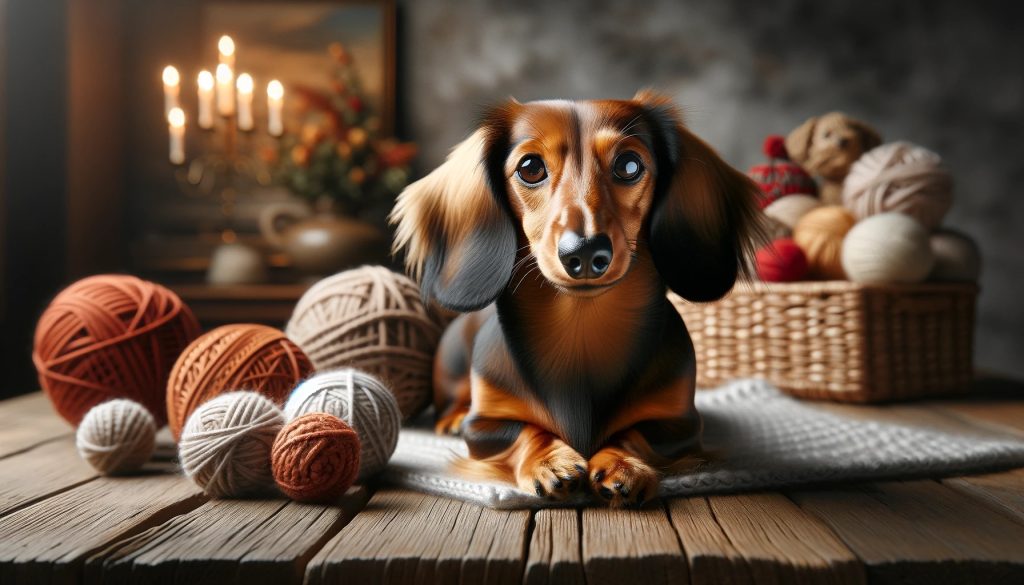If you’re considering getting a Dachshund or already have one, you may be wondering about their shedding tendencies and how to manage their coat care. Dachshunds are known for being a relatively low-shed breed, but shedding can still vary depending on their coat type and environmental factors.
Longhaired Dachshunds tend to shed the most among the three coat types, while smoothhaired Dachshunds shed minimally. Wirehaired Dachshunds shed the least. However, other factors such as overall health and coat cleanliness can also impact shedding. Fortunately, there are grooming tips and techniques that can help you reduce shedding and keep your Dachshund’s coat looking its best.
Key Takeaways:
- Dachshunds are considered a low-shed breed, with shedding varying based on coat type and environmental factors.
- Longhaired Dachshunds shed the most, followed by smoothhaired Dachshunds, while wirehaired Dachshunds shed the least.
- Regular grooming and brushing can help manage shedding and keep your Dachshund’s coat healthy.
- Specific grooming tools and products are available for each coat type, ensuring proper care and maintenance.
- Monitoring your Dachshund’s shedding and overall coat health is important for detecting any underlying health issues.
Understanding Dachshund Coat Types and Shedding Patterns
If you’re a proud Dachshund owner, it’s essential to understand the coat types and shedding patterns of these adorable dogs. Dachshunds come in three coat varieties – longhaired, smoothhaired, and wirehaired.
Longhaired Dachshunds:
“Longhaired Dachshunds shed more prominently twice a year, typically during the spring and fall seasons.”
To manage shedding in longhaired Dachshunds, daily brushing and regular care with a comb can be highly effective in keeping the shedding under control. By establishing a grooming routine, you can minimize shedding and maintain a healthy coat for your furry friend.
Smoothhaired Dachshunds:
“Smoothhaired Dachshunds shed minimally throughout the year.”
For smoothhaired Dachshunds, weekly brushing with a soft bristle brush is recommended. This helps in removing loose hair and preventing it from spreading around your home. Although shedding is minimal, regular grooming still plays a crucial role in keeping their coat healthy and shiny.
Wirehaired Dachshunds:
“Wirehaired Dachshunds also shed minimally, but shedding occurs more frequently in spring and autumn.”
Wirehaired Dachshunds have a unique coat that requires specialized care. While shedding is minimal, they may require stripping by a professional groomer to maintain their coat’s texture and reduce shedding.
By understanding the shedding patterns associated with each coat type, you can effectively manage shedding in your Dachshund and keep their coat healthy and beautiful.
Remember: Regular brushing, proper grooming, and appropriate care are essential in reducing shedding and maintaining a Dachshund’s coat. By following these grooming tips, you can help your Dachshund look their best while keeping shedding to a minimum.
Managing Dachshund Shedding and Coat Care
Dachshunds are moderate shedders, but with the right approach to grooming and coat care, you can effectively manage their shedding. Regular grooming and brushing are key to controlling shedding in Dachshunds.
To start, establish a grooming routine based on your Dachshund’s coat type. For longhaired Dachshunds, daily brushing with a comb can help remove loose hairs and prevent them from spreading around your home. Smoothhaired Dachshunds shed minimally, so a weekly brushing with a soft bristle brush is sufficient.
“Regular grooming and brushing are key to controlling shedding in Dachshunds.”
Wirehaired Dachshunds shed the least, but they require stripping by a professional groomer. This process helps remove dead hairs from their wiry coat and stimulates new hair growth. Consider scheduling regular grooming appointments to keep your wirehaired Dachshund’s shedding under control.
In addition to grooming, proper nutrition plays a crucial role in managing shedding. Feed your Dachshund a healthy and balanced diet to promote a healthy coat. Consider adding supplements rich in essential fatty acids, such as omega-3 and omega-6, to support skin and hair health.
“Feed your Dachshund a healthy and balanced diet to promote a healthy coat.”
If you notice excessive shedding in your Dachshund, it could be a sign of an underlying health issue. Monitor their shedding patterns and consult a veterinarian if you have concerns. Regular visits to the vet for health check-ups can also help identify any potential health issues affecting your Dachshund’s coat.
“If you notice excessive shedding in your Dachshund, it could be a sign of an underlying health issue.”
To summarize, managing Dachshund shedding requires a combination of regular grooming, proper nutrition, and monitoring their overall health. By following a grooming routine tailored to your Dachshund’s coat type, using the right tools and products, and staying vigilant about their shedding patterns, you can keep your Dachshund’s coat in top condition and minimize shedding in your home.
Conclusion
Dachshunds are known for their moderate shedding and are not considered hypoallergenic. Regardless of the coat type, all Dachshunds will shed to some extent. However, wirehaired Dachshunds tend to shed the least compared to their longhaired and smoothhaired counterparts. To effectively manage shedding in Dachshunds, regular grooming, bathing, and brushing are essential.
By establishing a grooming routine based on your Dachshund’s coat type, you can minimize shedding and keep their coat healthy. Utilize appropriate grooming tools and products recommended for your specific coat type. Additionally, maintaining a nutritious diet and considering supplements that promote skin and hair health can contribute to a healthy coat with reduced shedding.
If you notice excessive shedding in your Dachshund, it is advisable to monitor it closely and consult with a veterinarian if necessary. Excessive shedding could be a sign of underlying health issues that need attention. Regular vet visits are essential for overall health check-ups and can provide guidance on managing shedding in your Dachshund.
Finally, to manage shedding in your home, regular maintenance and cleaning are key. Vacuuming and using lint rollers on furniture and clothing can help control loose hair. By following these best practices and implementing proper grooming techniques, you can keep your Dachshund’s shedding under control and ensure a comfortable living environment for both you and your pet.





